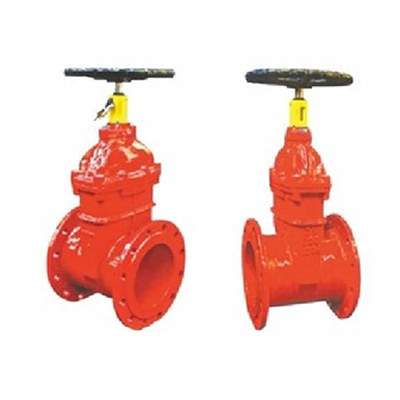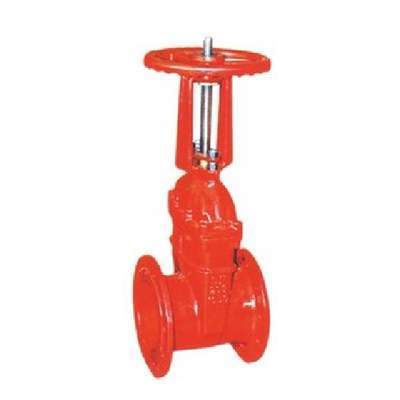Welcome to My Blog!
Before we dive into the content, I’d love for you to join me on my social media platforms where I share more insights, engage with the community, and post updates. Here’s how you can connect with me:
Facebook:https://www.facebook.com/profile.php?id=61563865935136
Now, let’s get started on our journey together. I hope you find the content here insightful, engaging, and valuable.
Introduction

Fire safety is a critical concern in industries, commercial buildings, and residential spaces. Among the essential components of fire protection systems, fire valve types play a pivotal role in controlling water flow, suppressing fires, and ensuring safety. At Fanlei, a leading valve manufacturing company integrating research, design, production, and sales, we specialize in delivering high-quality valve products tailored to diverse applications. Understanding the various fire valve types is crucial for selecting the right equipment to meet safety standards and protect lives and property. This blog explores the essential fire valve types, their functionalities, and their importance in fire protection systems, offering insights for facility managers, engineers, and safety professionals.
Why Fire Valve Types Matter in Safety Systems
Fire valve types are integral to fire suppression systems, such as sprinklers, hydrants, and foam-based setups. These valves regulate the flow of water or fire-suppressing agents, ensuring timely and effective response during emergencies. Choosing the appropriate fire valve type can mean the difference between containing a fire and allowing it to spread uncontrollably. Fanlei’s commitment to producing reliable and durable valves ensures that our products meet stringent safety standards, providing peace of mind for our clients across various industries.
The Role of Fire Valve Type in Fire Suppression
Fire valve types serve as the backbone of fire suppression systems by controlling the release of extinguishing agents. Whether it’s a deluge system flooding an area with water or a pre-action system preventing accidental discharge, the right valve ensures precision and reliability. Fanlei’s advanced manufacturing processes guarantee that our fire valve type perform optimally under high-pressure conditions, making them a trusted choice for critical applications.
Common Fire Valve Types for Safety Applications
Several fire valve types are commonly used in fire protection systems, each designed for specific purposes. Below, we explore the most prevalent types, their features, and their applications in ensuring safety.
Gate Valves: Reliable Flow Control
Gate valves are widely used in fire protection systems due to their ability to provide full, unobstructed flow when open and a tight seal when closed. These fire valve types are ideal for on/off applications, such as in fire hydrant systems, where water flow must be controlled efficiently. Fanlei’s gate valves are engineered for durability, ensuring long-term performance in demanding environments.
Butterfly Valves: Compact and Efficient
Butterfly valves are compact fire valve type that use a rotating disc to regulate flow. Their lightweight design and quick operation make them suitable for sprinkler systems and other fire suppression setups. At Fanlei, our butterfly valves are crafted with precision to offer low maintenance and high reliability, meeting the needs of modern fire safety systems.
Check Valves: Preventing Backflow
Check valves are essential fire valve types that allow flow in one direction while preventing backflow, which could compromise system integrity. These valves are commonly used in fire pump systems to maintain pressure and ensure water flows toward the fire. Fanlei’s check valves are designed to withstand high pressures, providing a robust solution for fire protection.
Deluge Valves: Rapid Fire Suppression
Deluge valves are specialized fire valve type used in high-hazard areas, such as chemical plants or aircraft hangars. These valves remain open during operation, releasing large volumes of water or foam to suppress fires quickly. Fanlei’s deluge valves are rigorously tested to ensure rapid response and reliability in critical situations.
Pre-Action Valves: Controlled Activation
Pre-action valves are fire valve types designed for environments where accidental water discharge could cause significant damage, such as data centers or museums. These valves require a two-step activation process, combining fire detection with valve operation. Fanlei’s pre-action valves offer precision and safety, protecting valuable assets while maintaining fire suppression capabilities.
Pressure Reducing Valves: Maintaining System Balance
Pressure reducing valves are fire valve types that regulate water pressure to prevent damage to pipes and fittings in fire protection systems. These valves ensure consistent performance in high-pressure environments. Fanlei’s pressure reducing valves are designed for easy installation and maintenance, making them a practical choice for facility managers.
Comparison of Fire Valve Types
To help you choose the right fire valve types for your safety needs, the following table summarizes the key features and applications of the most common valves discussed above.
| Fire Valve Type | Function | Applications | Advantages |
|---|---|---|---|
| Gate Valve | On/off flow control | Fire hydrants, main water lines | Full flow, reliable sealing |
| Butterfly Valve | Flow regulation | Sprinkler systems, compact setups | Lightweight, quick operation |
| Check Valve | Prevent backflow | Fire pumps, water supply lines | Maintains system pressure |
| Deluge Valve | Rapid water/foam release | High-hazard areas, industrial sites | Fast response, high volume |
| Pre-Action Valve | Controlled water release | Data centers, museums | Prevents accidental discharge |
| Pressure Reducing Valve | Regulate system pressure | High-pressure systems | Protects pipes, ensures consistency |
This table provides a quick reference for understanding the unique benefits of each fire valve type, aiding in informed decision-making for fire safety systems.
Factors to Consider When Choosing Fire Valve Types
Selecting the right fire valve type requires careful consideration of several factors, including system requirements, environmental conditions, and regulatory standards. Below, we outline key considerations to guide your selection process.
System Compatibility
Ensure that the fire valve types you choose are compatible with your existing fire protection system. For example, deluge valves are suitable for open systems, while pre-action valves are better for controlled environments. Fanlei’s wide range of fire valve type is designed to integrate seamlessly with various system configurations.
Environmental Conditions
The operating environment plays a significant role in valve selection. For instance, outdoor fire valve type must withstand extreme temperatures and corrosion. Fanlei’s valves are manufactured with high-quality materials to ensure durability in harsh conditions, making them suitable for both indoor and outdoor applications.
Compliance with Safety Standards
Fire valve types must comply with industry standards, such as those set by the National Fire Protection Association (NFPA) or Underwriters Laboratories (UL). Fanlei’s commitment to quality ensures that our fire valve types meet or exceed these standards, providing reliable performance in safety-critical applications.
Maintenance Tips for Fire Valve Types

Proper maintenance is essential to ensure the longevity and performance of fire valve types. Regular inspections, testing, and cleaning can prevent malfunctions and ensure readiness during emergencies. Fanlei recommends scheduling annual maintenance checks and following manufacturer guidelines to keep your fire valve type in optimal condition.
Routine Inspections
Conduct visual inspections of fire valve type to check for signs of wear, corrosion, or leaks. Ensure that valves are accessible and free from obstructions. Fanlei’s user-friendly valve designs simplify inspection processes, saving time and effort for maintenance teams.
Functional Testing
Perform regular functional tests to verify that fire valve type operate as intended. For example, test deluge valves to ensure rapid activation or check valves to confirm backflow prevention. Fanlei’s valves are designed for easy testing, minimizing downtime during maintenance.
Conclusion
Fire valve types are indispensable components of fire protection systems, offering critical control over water and extinguishing agents to safeguard lives and property. By understanding the different fire valve types—such as gate, butterfly, check, deluge, pre-action, and pressure reducing valves—you can make informed decisions to enhance your safety systems. At Fanlei, we pride ourselves on delivering high-quality fire valve types that meet the diverse needs of our clients, from industrial facilities to commercial buildings. For reliable, innovative, and compliant valve solutions, contact us today to explore our product range and elevate your fire safety strategy.
FAQ
What are the most common fire valve types?
The most common fire valve types include gate valves, butterfly valves, check valves, deluge valves, pre-action valves, and pressure reducing valves. Each type serves a specific purpose in fire protection systems.
How often should fire valve types be maintained?
Fire valve types should be inspected and tested at least annually, following manufacturer guidelines and industry standards like NFPA. Regular maintenance ensures optimal performance during emergencies.
Can fire valve types be used in non-fire applications?
While fire valve types are designed for fire protection, some, like gate or butterfly valves, can be used in other applications, such as water supply or HVAC systems, depending on their specifications.
